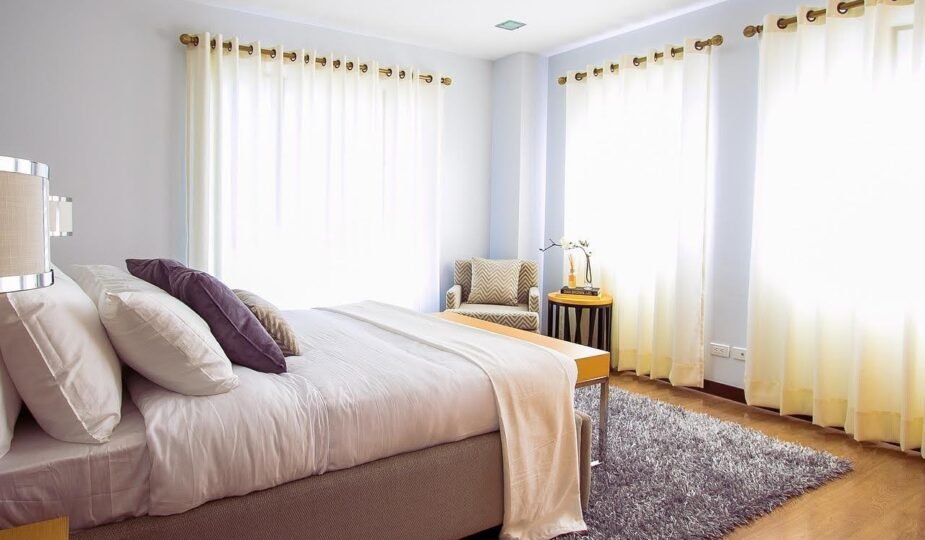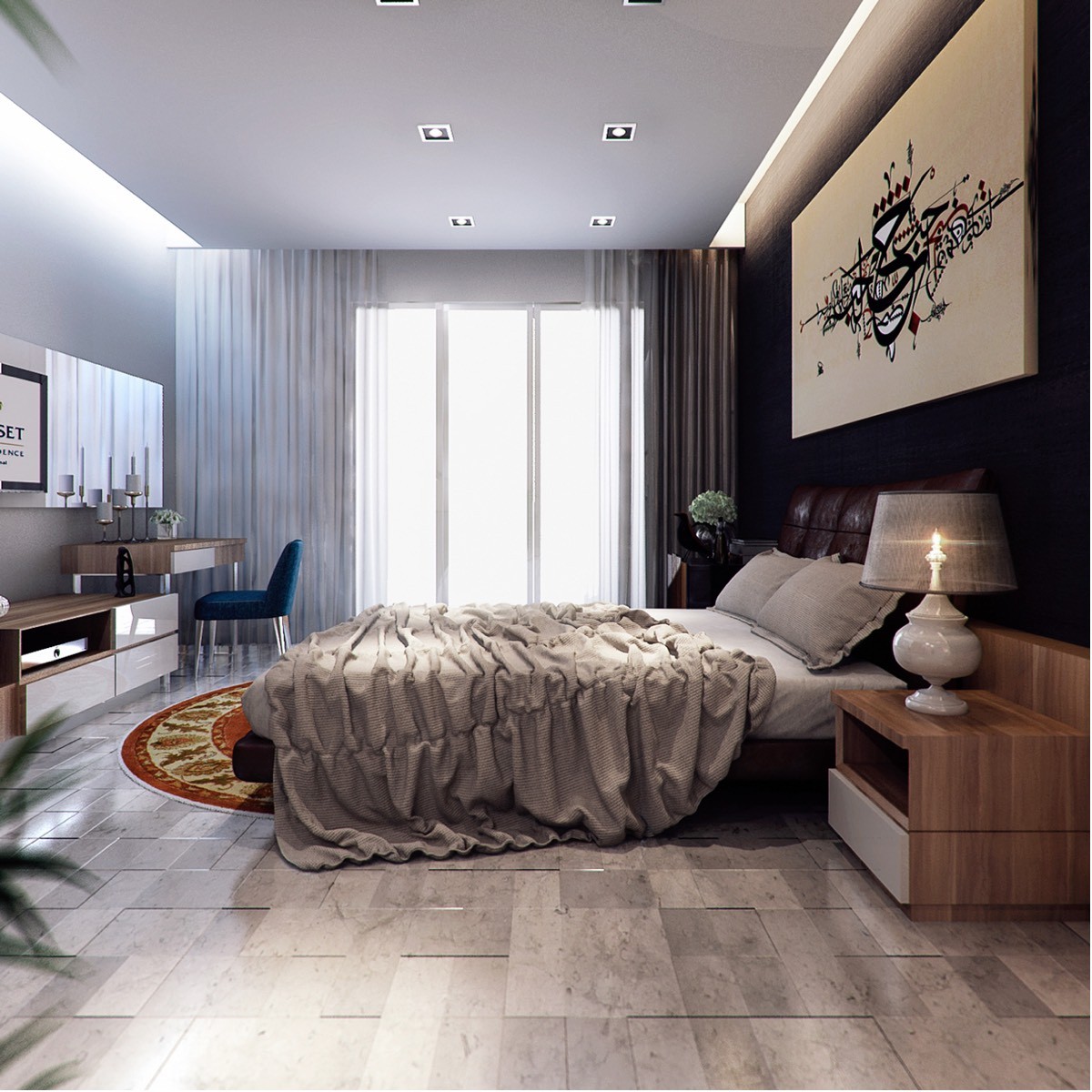
Tips to Make Your Bedroom More Comfy
Creating a bedroom that’s not just a place to sleep but a sanctuary of comfort is something many of us strive for. Your bedroom should be the most comfortable room in your house, a place where you can unwind and recharge after a long day. In our busy lives, having a personal retreat is more important than ever. It’s not just about having a stylish space; it’s about creating an environment that promotes relaxation and well-being.
This guide will provide you with simple yet effective tips to transform your bedroom into a cozy haven. Whether it’s choosing the right mattress, picking soothing color schemes, or ensuring the room is at the perfect temperature for sleep, each tip is designed to enhance the comfort and tranquility of your bedroom. With these suggestions, you can turn your ordinary bedroom into a comfy retreat that you’ll love spending time in.
So, let’s dive in and explore how to make your bedroom the ultimate comfy space in your home.
Choosing the Right Mattress
A good night’s sleep starts with the right mattress, and the choice of a mattress greatly influences your comfort and quality of sleep. Consider factors like firmness, material, and size based on your sleeping habits and physical needs.
Memory foam mattresses, known for their pressure relief and support, can be a great choice. Innerspring mattresses offer a firmer sleeping surface, suitable for those who prefer that feel. For a blend of luxury and comfort, consider options like the Lux Estate collection by Mattress Factory. These high-quality mattresses are designed to provide optimal support and comfort.
Investing in Quality Bedding
Quality bedding can make a significant difference in your sleep comfort. Look for materials that suit your personal preferences and the climate. Breathable fabrics like cotton or bamboo are ideal for warmer climates, while flannel or sateen might be preferred in colder areas. A higher thread count usually indicates softer sheets, but it’s not the only factor to consider. The weave and material quality also plays a crucial role in the feel and durability of your bedding.
Pillows for Your Preferred Sleeping Position
Pillows are not one-size-fits-all. Your preferred sleeping position should guide your pillow choice. Side sleepers typically need thicker pillows to fill the space between the head and shoulders, while stomach sleepers benefit from softer, thinner pillows. Back sleepers may opt for medium-thick pillows to support the natural curve of their neck. Remember, the right pillow not only enhances comfort but can also prevent neck and back pain.
The Impact of Color Schemes
The color scheme of your bedroom can significantly affect your mood and sleep quality. Soft, muted colors like blues, greens, and lavender are traditionally seen as calming and are excellent choices for promoting relaxation. Avoid overly bright colors, as they can be stimulating and might make it harder to unwind. Experiment with different hues to find what resonates with your personal style and creates a serene atmosphere in your bedroom.
Optimizing Lighting for Comfort
Lighting plays a critical role in setting the mood of your bedroom. Harsh, bright lights can disrupt the relaxing vibe of the space. Consider installing dimmer switches to control the intensity of light. Bedside lamps with warm bulbs can add a cozy glow, perfect for reading or unwinding before sleep. For those sensitive to light while sleeping, blackout curtains can be a great addition to block out unwanted light from outside.
Incorporating Relaxing Scents
The power of scent in creating a relaxing atmosphere can’t be overstated. Scents like lavender, chamomile, and vanilla are known for their calming properties and can help ease you into a peaceful sleep. Consider using essential oil diffusers, scented candles, or incense sticks to infuse your bedroom with these relaxing aromas. However, it’s important to choose scents that you personally find soothing, as scent preferences are highly individual.
Personalizing Your Space
Your bedroom should reflect your personality and taste. This personalization can be as simple as displaying your favorite photographs, artwork, or memorabilia. Personal touches can make the space feel more comfortable and inviting. Consider adding items that have sentimental value or that bring back happy memories. These personal elements can transform your bedroom into a space that truly feels like your own.

Maintaining a Clutter-Free Environment
A cluttered bedroom can be stressful and disrupt your peace of mind. Regularly decluttering and organizing your space can have a significant impact on your comfort levels. Utilize smart storage solutions like under-bed storage, wall shelves, or closet organizers to keep things neat and tidy. A clean and organized bedroom not only looks better but also promotes a more restful and serene environment.
Temperature Control for Optimal Sleep
The temperature of your bedroom can greatly affect your sleep quality. Most people sleep best in a slightly cool room, around 65 degrees Fahrenheit. Consider investing in a programmable thermostat to maintain a consistent temperature. During colder months, using flannel sheets or a heavier comforter can add warmth, while in warmer months, lightweight bedding can keep you cool. If you don’t have central air conditioning or heating, fans, space heaters, or window air conditioners can also help regulate the temperature.
Investing in Sound and Light Blocking Features
External noises and light can disrupt your sleep. Investing in soundproofing solutions like heavy curtains or double-pane windows can significantly reduce noise intrusion from outside. If complete soundproofing isn’t feasible, consider using a white noise machine or earplugs to drown out disruptive sounds. For light control, blackout curtains are a game-changer. They can block out street lights or early morning sunlight, ensuring your sleep environment remains dark and conducive to rest.
Conclusion
Transforming your bedroom into a comfy and personal retreat is about more than just aesthetics; it’s about creating a space that caters to your relaxation and well-being. From the soothing influence of calming scents to the comfort of a clutter-free and personalized space, each element plays a crucial role. Regulating the temperature and minimizing disruptions from noise and light further enhance the tranquility of your bedroom.
Implementing these tips will not only make your bedroom more comfortable but will also help create an environment where you can unwind and rejuvenate. Remember, your bedroom should be your sanctuary, a place where you can escape the hustle and bustle of everyday life and enjoy restful, uninterrupted sleep. So, take the time to make these changes and transform your bedroom into a comfy haven that you look forward to retiring to each night.









